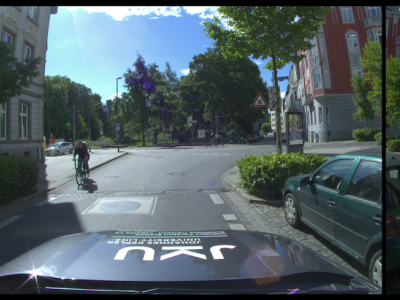Sensors

The data is uploaded according to the requirements of IEEE DataPort. The file is named 'data of robot control experiments.zip', and it contains two folders. The folder named 'Data of Section IV-B' is the experimental data in Section IV-B, and the folder named 'Data of Appendix A' is the experimental data in Appendix A.
- Categories:
 89 Views
89 ViewsThe accurate classification of landfill waste diversion plays a critical role in efficient waste management practices. Traditional approaches, such as visual inspection, weighing and volume measurement, and manual sorting, have been widely used but suffer from subjectivity, scalability, and labour requirements. In contrast, machine learning approaches, particularly Convolutional Neural Networks (CNN), have emerged as powerful deep learning models for waste detection and classification.
- Categories:
 1108 Views
1108 Views
this is a dataset for Human-Robot Physical Contact Classification. We used the UR10e six-axis robotic arm as the data collection object and the official tool, RTDE, as the data acquisition tool. Regarding the labels of the dataset, we categorize Human-Robot physical contact into three types: no contact, intentional contact, and collision, based on common occurrences in Human-Robot collaborative tasks. The dataset contains 2375 non-repetitive data entries with valid Human-Robot physical contact information, and each entry includes the motion data of the robotic arm within 1 second.
- Categories:
 194 Views
194 ViewsThe IAMCV Dataset was acquired as part of the FWF Austrian Science Fund-funded Interaction of Autonomous and Manually-Controlled Vehicles project. It is primarily centred on inter-vehicle interactions and captures a wide range of road scenes in different locations across Germany, including roundabouts, intersections, and highways. These locations were carefully selected to encompass various traffic scenarios, representative of both urban and rural environments.
- Categories:
 533 Views
533 Views
To evaluate the proposed odometry method based on 360-degree cameras, we build a new dataset using an Insta-360 One X2 device, which provided high-resolution 4K images captured at a rate of 30 frames per second and 500\,Hz IMU measurements from its built-in IMU.Different from previous datasets, we have set the illumination brightness and the camera movements as the condition variable. The sequence can be classified based on changes in illumination speed or camera movement intensity.
- Categories:
 624 Views
624 Views
Object tracking systems within closed environments employ light detection and ranging (LiDAR) to address privacy and confidentiality. Data collection occurred in two distinct scenarios. The goal of scenario one is to detect the locations of multiple objects from various locations on a flat surface in a closed environment. The second scenario describes the effectiveness of the technique in detecting multiple objects by using LiDAR data obtained from a single, fixed location.
- Categories:
 457 Views
457 ViewsThe enhanced dataset is a sophisticated collection of simulated data points, meticulously designed to emulate real-world data as collected from wearable Internet of Things (IoT) devices. This dataset is tailored for applications in safety monitoring, particularly for women, and is ideal for developing machine learning models for distress or danger detection.
- Categories:
 2150 Views
2150 ViewsUnderwater sampling of heart rate for sports training has growing attention recently because of the availability of new sensors able to gather data while the user is swimming. Namely, optical sensor for the wrist and strap sensor for the chest. Underwater data transmission is not an option, forcing the analysis to be done off-line. Thus, movement and distance from heart could infuence the gap between data from sensors.
- Categories:
 200 Views
200 Views




